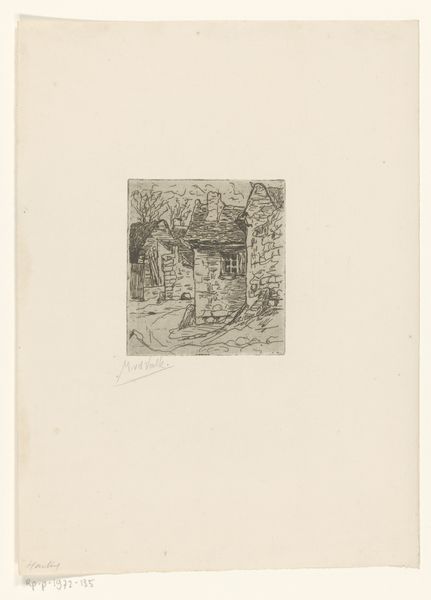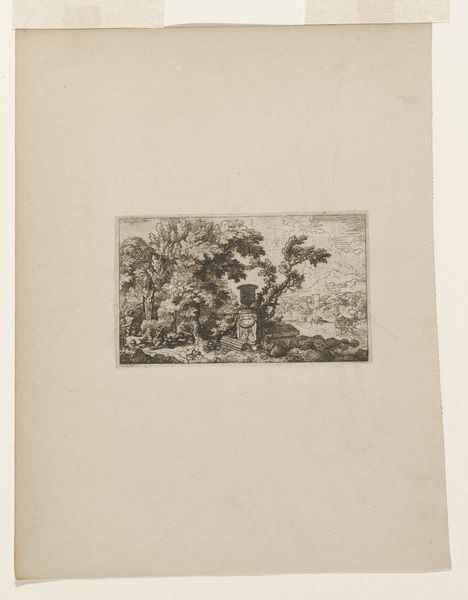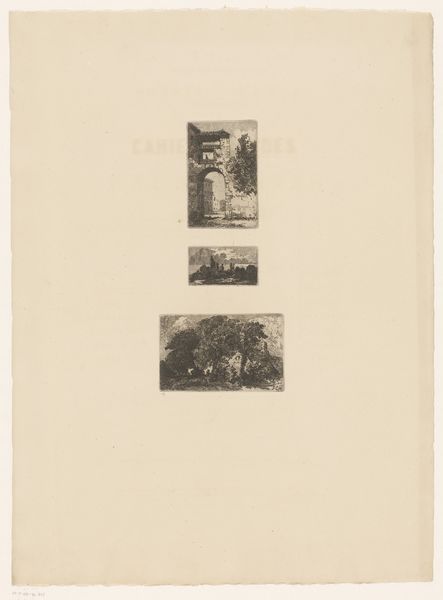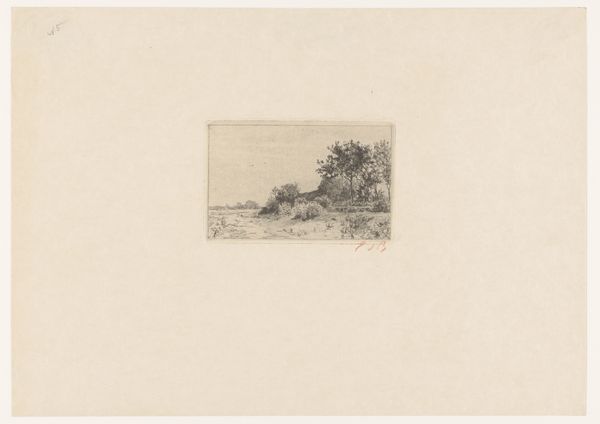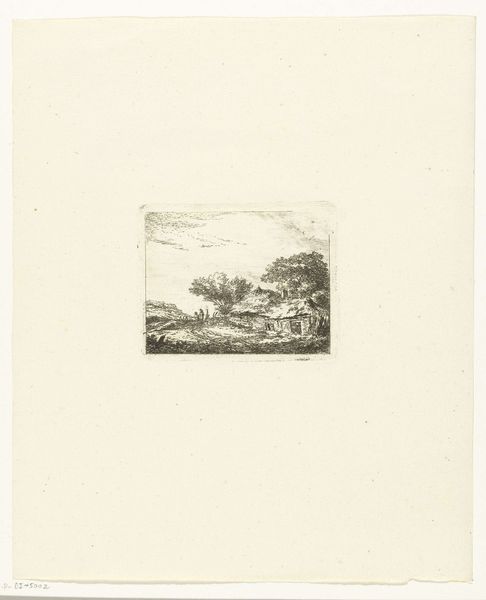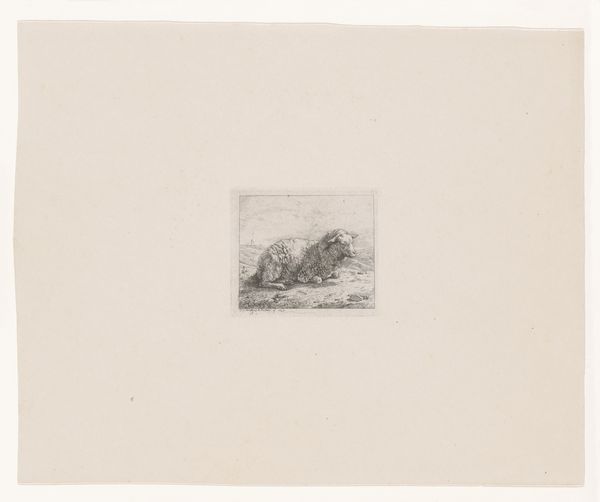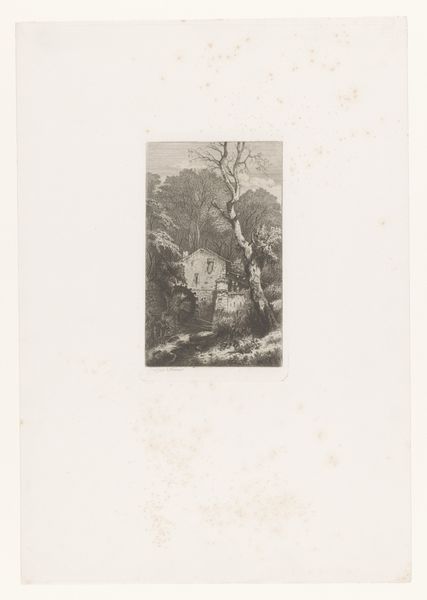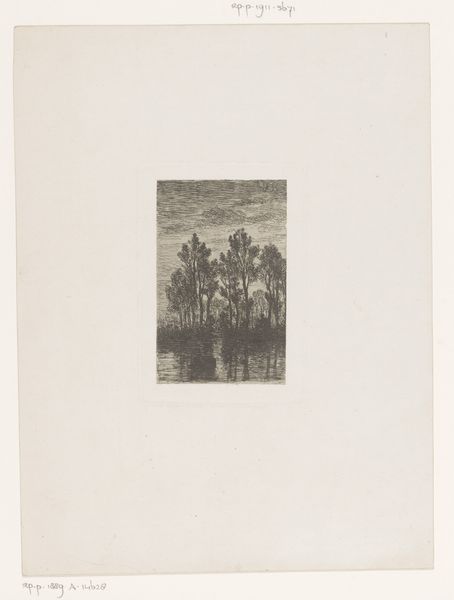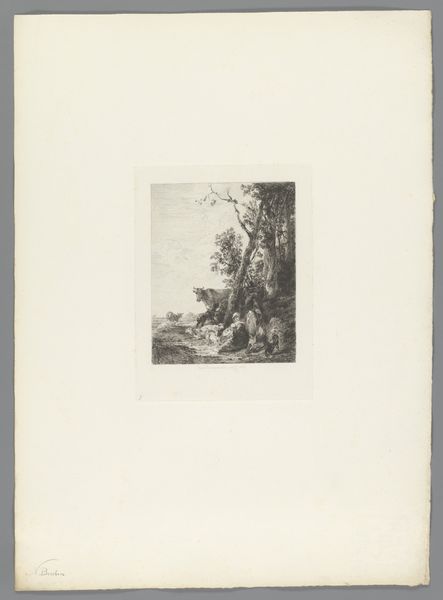
print, etching
#
16_19th-century
# print
#
etching
#
old engraving style
#
landscape
#
pencil work
#
genre-painting
#
realism
Dimensions: height 160 mm, width 119 mm
Copyright: Rijks Museum: Open Domain
Editor: Here we have André Belcour's "Zicht op een boerenerf" from 1874, an etching printed on paper. The landscape is quiet and unassuming. How do you interpret this work? Curator: Well, immediately I consider the social and historical context. This etching, depicting a rural farm scene, was created during a period of significant social upheaval in Europe with urbanization and industrialization rapidly changing society. What do you think Belcour is trying to say about these shifting societal norms? Editor: I see how the seemingly simple subject of a farm might actually speak to those broader issues. The detailed etching emphasizes the simple, traditional lifestyle in a pre-industrial world, maybe critiquing modernization? Curator: Precisely. And, let's consider who had access to art like this. Who was he addressing? Likely, an urban, bourgeois audience nostalgic for the countryside and perhaps anxious about the changes industrialization brought. Does that affect how you see it? Editor: It does. Knowing who the audience was reframes it for me. I initially saw just a landscape, but now I'm more aware of how this piece plays into complex themes of class, labor, and longing. Is the choice of etching, as opposed to other forms of printmaking, significant? Curator: It absolutely is. Etching allowed for finer lines and more detail, elevating the work beyond mere documentation. Consider the aesthetic value Belcour places on rural life – what values does he want his audience to adopt by consuming this image? Editor: That makes a lot of sense. The fine details almost romanticize it. It’s not just showing a farm; it's advocating for a particular way of life. Curator: Exactly! Artworks like this were shaping opinions. They are never politically neutral. They are cultural statements. What are you taking away? Editor: I’m seeing the political dimension of landscape art. It's not just about pretty scenery, it is often embedded in complicated cultural attitudes and maybe political activism. Thank you. Curator: My pleasure! I’m also constantly discovering new facets within these historical narratives.
Comments
No comments
Be the first to comment and join the conversation on the ultimate creative platform.

